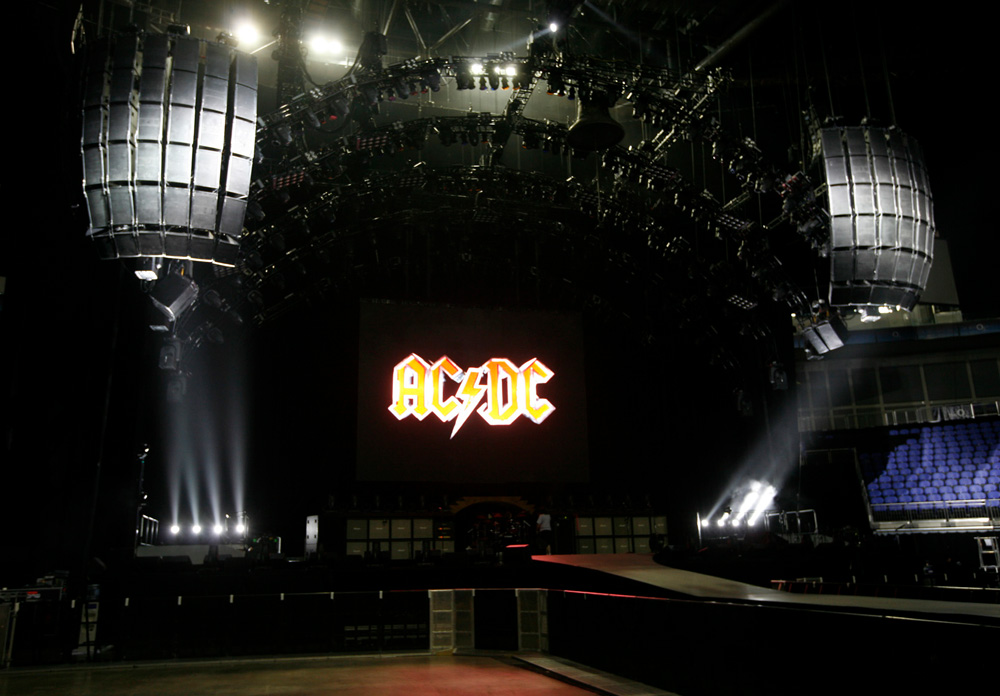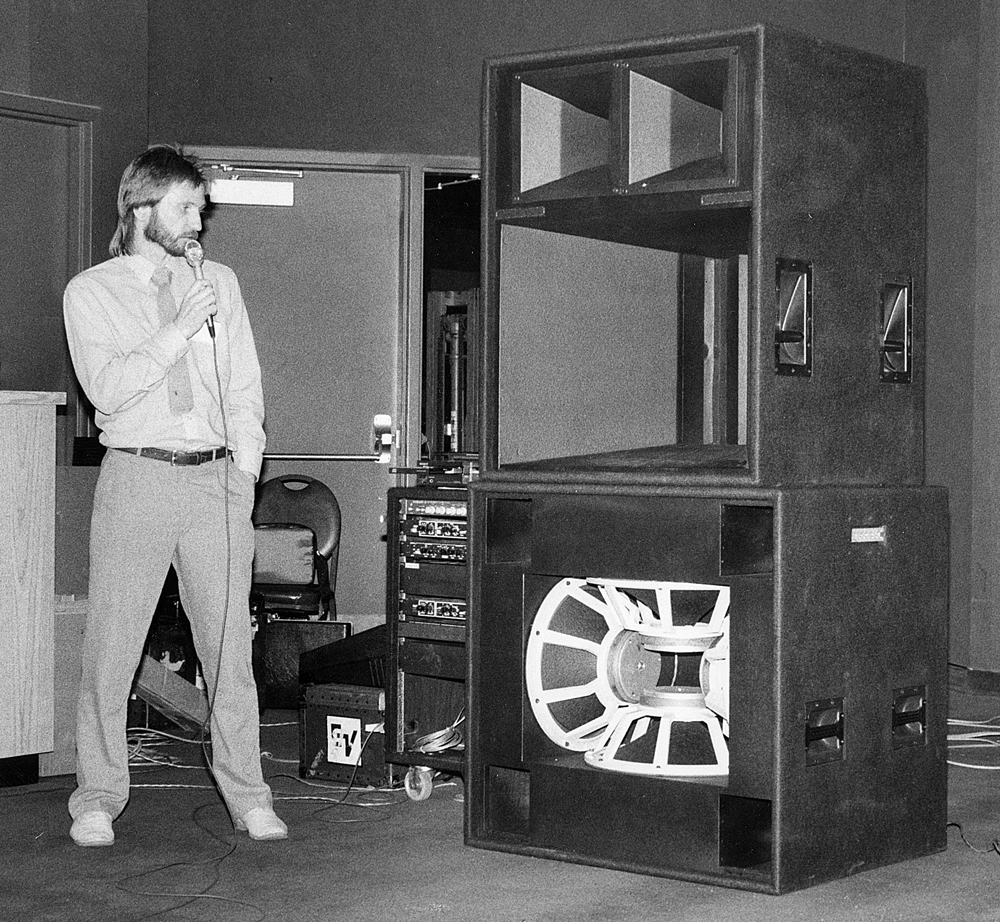
Also during this period, EV was first to publish full sets of third-octave polar responses for horns as well as first to include Thiele-Small parameters on woofer specification sheets, providing users with key enclosure characteristics and frequency response.
Later (mid-1980s), the company developed and released EastVAMP, a high-accuracy graphic technique for determining and optimizing loudspeaker coverage, what we commonly refer to as “modeling” today.
Extreme Innovation
Developments were happening across many product categories by the mid-1970s, when EV introduced the 100S Entertainer, a compact, full-range PA with molded plastic cabinets that proved immensely popular, helping to set the pace for the huge portable loudspeaker market.
Shortly after, EV acquired TAPCO, a company founded by Greg Mackie and specializing in the development of innovative electronic products, mixers in particular. TAPCO products became a mainstay of the EV line, both individually and within packaged portable PA systems.
In fact, an EV/TAPCO 100M powered mixer could be found at the heart of every Entertainer system, while a steady stream of power amplifiers and signal processors also flowed from this well.
Eventually, the entire electronics development and manufacturing operations were merged fully under the EV umbrella.

One of the many examples of where this strategy paid off significantly proved to be DeltaMax, a line of 2-way, biamped loudspeakers with companion controllers that were engineered for higher end portable and installed applications. The controllers helped further optimization in providing precision crossover, time delay and equalization, in addition to unique loudspeaker protection circuitry.
Within this same timeframe, EV unveiled a neodymium-based magnet structure for microphones, resulting in extended frequency response and increased power output. The initial N/DYM Series microphones quickly found their way on to hundreds of concert tours and stages, with the concept duplicated by other manufacturers. The breakthrough also found its way into compression and cone drivers in short order.
Shortly after, EV unveiled what is still considered to be one of the most fascinating (and effective) large-scale loudspeaker system developments to ever hit the concert touring market: Manifold Technology. As the name implies, the heart of the design utilizes a patented manifold to combine the outputs of multiple compression drivers to generate very high SPL with low distortion. It was first introduced in the MT-4, a true 4-way system split between two enclosures, with four drivers summed in each bandpass for a total of 16 drivers.

MT systems were a hit with touring companies and could be found on the road supporting top artists such as Aerosmith and ZZ Top. The design was soon adapted with the MT-2, offering the technology in a more compact footprint that proved popular with regional sound providers. Another variation flourished in the MH Series of horns for large-scale fixed installations.
This was followed by X-Array, developed to deliver extremely high acoustic output from lighter enclosures that were easy to array. The individual drivers, horns, cabinets, rigging and system configurations were formulated from the ground up, as was a new technology dubbed Ring-Mode Decoupling (RMD) that significantly improved clarity and intelligibility by reducing both linear and nonlinear resonance modes that “color” the output. AC/DC preferred X-Array to the extent that it was the iconic hard rock/blues band’s touring system of choice for 20 years, just recently retired.

And as line arrays became a staple of larger pro audio applications, EV answered with X-Line, offering users a choice of formats ranging from very large to compact. It too received widespread acclaim, deployed at global events like center stage in London’s Hyde Park for the Live 8 concerts, driven with EV P3000RL remote-control DSP amplifiers run with EV IRIS software, and on concert tours such as annual outings by country superstar Kenny Chesney.
The design also proved to suit the installation market, with an X-Line-based sound reinforcement system deployed at AT&T Stadium, home of the Dallas Cowboys of the National Football League and site of numerous special events.
